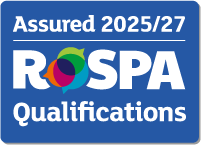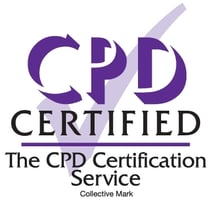Health and Safety Training Package - RoSPA training courses for staff safety
Creating a safe and compliant workplace starts with empowering your team. Our health and safety training options will equip your team with the knowledge they need to identify risks, reduce accidents, and ensure compliance with key regulations. From understanding hazard prevention to addressing workplace stress, our health and safety training offers the tools to protect your team and your business.

Show your team that their health and wellbeing matters most
91%
Mental Health UK’s Burnout report revealed that 91% of employees have experienced extreme or high stress levels at work.
17.1 million
An estimated 875,000 employees suffered from work-related stress in 2023, leading to 17.1 million working days lost.
61,000+
In 2023/24, workplace accidents accounted for 138 fatalities and over 61,000 non-fatal injuries reported under RIDDOR

Create a safer, healthier workplace for your team
Equip your team with the skills and knowledge to identify risks and maintain safety standards.
Our health and safety training courses cover critical health and safety topics, such as risk assessment, hazard recognition, and workplace wellbeing. You’ll also receive valuable tools to measure learning effectiveness, fix educational gaps, and gain access to regularly updated courses in several formats. Need a more custom approach to compliance learning? Explore our options below.
About our learning styles
In-depth
These are our more detailed e-learning courses that include practice scenarios and typically last between 25 and 45 minutes.
Refresher
These targeted courses help reinforce your employees' knowledge and notify them of any updates they might not be aware of. These typically last between 15 and 20 minutes.
Express
Our focused training courses deliver employee learning in smaller chunks, typically lasting between 10 and 15 minutes.
Microlearning
These bite-sized animated training videos can be delivered as: standalone, embedded in detailed e-learning courses, or compiled into a learning path.

We partnered with Skillcast to create a bespoke learning experience for each colleague. It uses dynamic assignments and deadlines to help learners plan and lead their journey. And, by restructuring our learning portal, we were also able to improve accessibility, user experience, and adoption.
Lead Learning Design Partner UK Stores,
Tesco
Working Safely
Awareness of health and safety procedures can prevent injuries and save lives.
Read more

Fire Safety
Educate your staff on the fire safety controls your Company has in place and the measures they need to take to reduce the risk of fire where you work.
Read more
Healthy Working
There are risks to your physical and mental health and wellbeing wherever you work.
Read more
Mental Health at Work
Stress, anxiety and depression are serious health hazards in the workplace.
Read more

Working Safely
Employees need to know how to protect their own health, safety and welfare as well as ensuring they don't cause harm to others.
DSE
Educate your staff on the controls that your Company has in place and how they can prevent ill-health if they regularly use Display Screen Equipment (DSE) at work.
Display Screen Equipment
Correctly setting up display screen equipment (DSE) is crucial for maintaining comfort and preventing strain or injury.
Slips and Trips
Slips and trips are among the most common causes of workplace injuries, often resulting in serious harm such as fractures or concussions.
Manual Handling
Manual handling tasks, such as lifting, carrying, pushing or pulling objects, can lead to injuries if not done correctly.

Display Screen Equipment (DSE)
Educate your staff on the controls that your Company has in place and how they can prevent ill-health if they regularly use Display Screen Equipment (DSE) at work.

Healthy Working
There are risks to your physical and mental health and wellbeing wherever you work.
Read more
Mental Health at Work for Managers
Stress, anxiety and depression are serious health hazards in the workplace.
Read more

First Aid Awareness
Regardless of whether an injury or illness has been caused by work, it is important that employees receive immediate support.
Read more

Menopause Awareness
Menopause is a health and safety, wellbeing and equality issue which affects people in different ways.
Read more

General Office Hygiene
Educate your staff on general office hygiene protocols to reduce common viruses and infections from spreading at the workplace.
Neurodiversity Awareness
Misunderstanding neurodiversity can leave employees unsupported and limit workplace potential.
10 Essential Office Hygiene Practices
Hygiene is a key factor in maintaining a clean, safe and healthy workplace.
10 Steps to Healthy Working
A fast-paced work environment can take a toll on physical and mental health if risks are not managed.
COSHH
Exposure to hazardous substances in the workplace can cause serious health conditions, including respiratory diseases and skin disorders.
Electricity
Electricity is essential in the workplace, but even minor mistakes can cause serious injuries, fires or fatalities.
Fire
Fires pose a serious threat in any workplace, making fire prevention and safety measures essential.
Noise
Prolonged or excessive noise can cause stress, hearing damage and other health risks.
Personal Protective Equipment
Personal protective equipment is essential in minimising exposure to workplace hazards but should be the last line of defence.
Transport
Work-related driving poses significant risks, contributing to a large percentage of road accidents.
Work Equipment
Work equipment includes tools, machines and other devices used to perform tasks safely and efficiently.
Working Safely
Workplace accidents occur frequently, but many are preventable through awareness and proper safety measures.
Menopause Awareness
Menopause is a natural stage in life that can bring physical and emotional challenges and potentially affect work performance.
Mental Health at Work
Stress, anxiety and depression are major workplace health risks, accounting for over half of work-related ill-health cases.
New and Expectant Mothers at Work
When an employee is pregnant or returning from maternity leave, certain legal rights and health considerations apply.

Accident Reporting and Investigation
Learn how to pinpoint incidents that need reporting, understand the depth of causes from immediate to root, differentiate active from latent failures, and confidently navigate the HSE's six-step accident investigation.

Asbestos
Educate your staff on the risks posed by asbestos, the controls your Company has in place, and what you should do to manage these risks and stay safe.

Fire Warden Training
Gain a comprehensive understanding of your role as a fire warden, which encompasses not only how to respond effectively in the event of a fire but also proactive measures to prevent such incidents from occurring.

Ladders and Stepladders
Educate your staff on the controls that your Company has in place and what they should do to prevent accidents and incidents whenever they use ladders and/or stepladders at work.

Legionella
Educate your staff on the controls that your Company has in place and what they should do to prevent legionella.

Lone Working
Lone working offers greater flexibility, autonomy and creates a broader talent pool for businesses.

Managing Safely
Managers need a deeper understanding of issues, systems and procedures to empower them to deal with the health and safety of their teams.

New and Expectant Mothers at Work
Being a new or expectant mother is an exciting time.

Violence and Aggression
Educate your staff on the controls your Company has in place and what they should do to safely manage situations with the risk of violence and aggression.

Working at Height
Educate your staff on the controls that your Company has in place and what they should do to prevent accidents and injuries whenever they work at height.

Work-related Stress
Educate your staff on the controls that your Company has in place and what they should do to prevent and manage stress in the workplace.

Gain confidence in your compliance efforts
Available in Standard, Enhanced, or Premium plans, the Skillcast Portal gives you the tools to deliver company-wide compliance training with ease. Enhance your compliance e-learning with our comprehensive Learning Management System (LMS) — or use your own. You can also decide whether to start straight away with our off-the-shelf courses or customise our solutions to suit your specific needs. Want to learn more about how the Skillcast Portal can become your compliance e-learning partner?
Common health and safety training course questions
Health & Safety
Common FAQs
How can I log and track work-related injuries, accidents and dangerous occurrences?
How can I ensure my employees’ workstation setups comply with health and safety regulations?
How can I measure and improve employee wellbeing in relation to health and safety?
How does an Health and Safety Management System aid compliance?
How do you measure the effectiveness of an Health and Safety Management System?
Are Skillcast courses SCORM-compliant?
What other tools are needed beyond training?
Is our training content still compliant with the latest legislation?
- You can check the latest course content updates in our library updates page: https://www.skillcast.com/compliance-course-library-updates
- For major legislative changes, we:
- Send you email alerts to ensure you are notified
- Offer you a free trial of newly created or updated content
- Host webinars with compliance experts to explain the changes and how our training supports your ongoing compliance
Can you translate our content into other languages?
What file types are supported by the Skillcast system?
Features |
Supported file types and details |
|
File Exchange |
File types: PDF, Excel spreadsheets, Word documents, SCORM and xAPI files, and compressed zip files. Max file size: Default is 1GB, can be increased to a max of 2GB |
|
SCORM files |
Versions: SCORM 1.2, SCORM 1.2 for Moodle, SCORM 2004 2nd, 3rd and 4th Edition. Max file size: 1024MB |
|
xAPI file |
Max file size: 2GB |
|
Videos |
File types: MP4 or MOV. Videos must be optimised, with a max file size of 100MB. If the file is bigger, our Design Team can help |
|
Images |
File types: jpg, png and gif. The file size should ideally be 100KB, but it can be up to 250KB |
|
CPD evidence |
File types: Word, PDF, Excel and CSV. File size: the limit should be whatever the portal config option is set to. Servers are set to max 2GB |
|
Policy documents |
PDF or Word File size: the limit should be whatever the portal config option is set to. Servers are set to max 2GB |
|
Offline activities evidence |
File types: PDF, DOC, DOCX, XLS, XLSX, CSV, PNG, GIF, JPEG, JPG, PPTX and MSG. File size: the limit should be whatever the portal config option is set to. Servers are set to max 2GB |
|
Client logo files |
File types provided by client: EPS, PDF, AI and SVG |
|
Registers |
PDF, DOC, DOCX, XLS, XLSX, CSV, PPT, PPTX, POT, PPA, PPS, JPG, JPEG, PJEPG, PNG, BMP, GIF, MP4, MOV, WMV, CPTX, CP, TXT, ZIP and MSG files |
|
Declarations |
JPG, JPEG, PNG, GIF, XLS and XLSX files |
